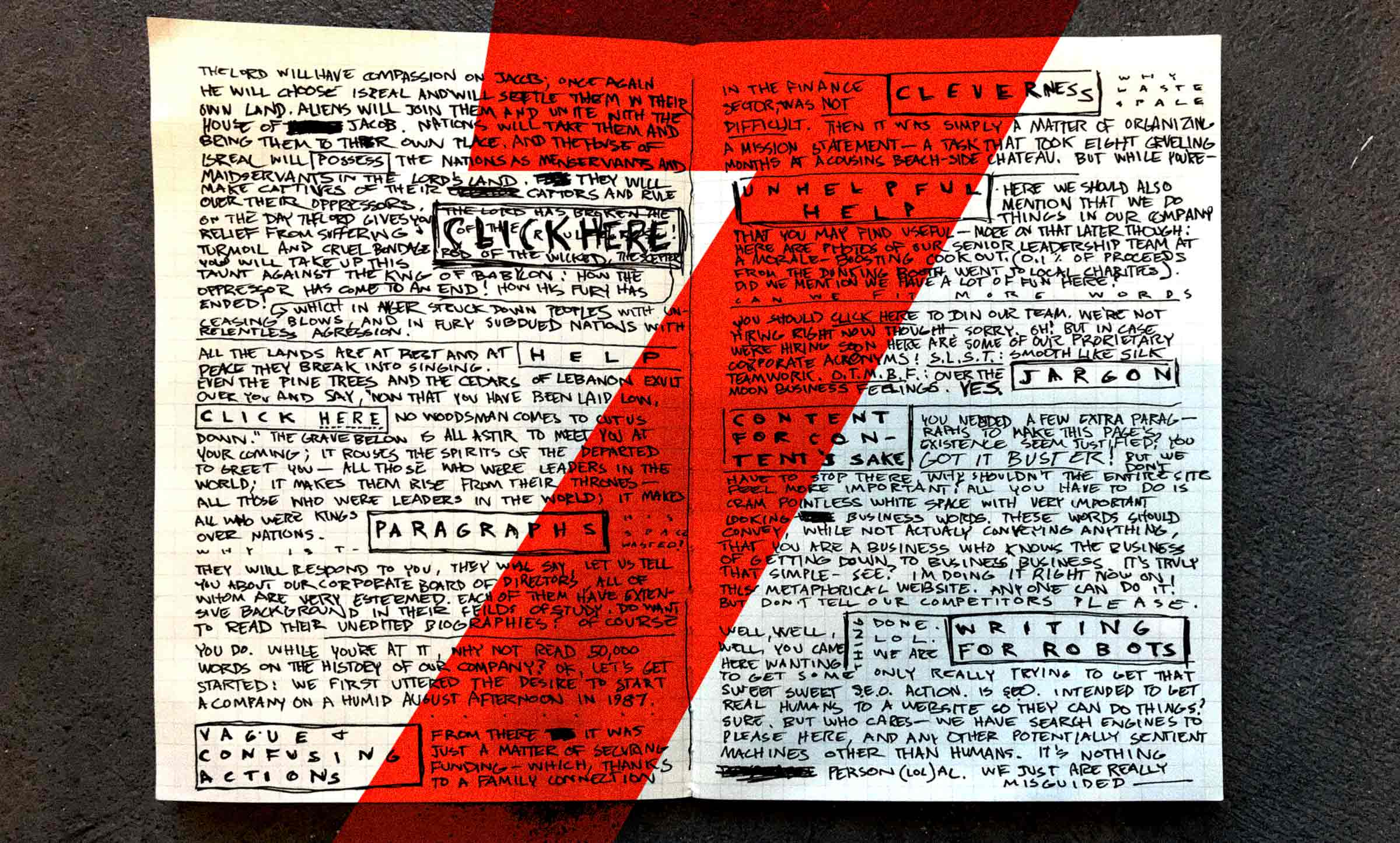Not a Writer? That's No Excuse for Bad Content
5 min read
Not everyone is a writer, but they do write: grocery lists, texts, tweets, holiday cards (or, well, they mean to). In the world of digital products, often a developer or business analyst or someone in a non-writing role has to write copy—and it shows. Developers add jargon-filled error messages. Marketing creates paragraphs of promotional messaging. Designers put words where words do not belong. But it doesn't have to be a disaster. Even non-writers can learn the basics of good digital content.
The writing process shouldn’t start with writing.
Before ever typing a word, start with research. You will achieve astounding clarity, saving time and energy, by doing the necessary groundwork.
Above all: know your audience.
You are writing for humans, not robots or SEO or our Google overlords. But which humans are you writing for? Be specific. Discriminate. You can't address the needs of anyone and everyone who happens to stumble on your content.
If your site or app went through a proper Discovery phase, you’ll be able to reference user personas. If you don’t have access to personas, here are some questions that can help create a vivid picture of the end user:
- What kind of room or space are they in?
- What device are they using?
- What time is it? Have they had lunch?
- What are their emotions? (Are they hungry?)
- Why are they looking at your content instead of, say, watching The Great British Bake-Off?
Know your users’ pains and gains.
Once you know the busy human you are writing for, you have a much better chance at knowing their content needs. They have tasks to complete, information to find, and shows to watch—what is getting in the way? How can you speed things up or make things easier?
Do the writing in context.
Where you write is just as important as what you write. You won't be able to tell if the content is working if it stays on a whiteboard or in Word document. Do your writing in a wireframe, prototype, or screen in development. In context, you can see whether you are addressing the user’s immediate goals, needs, and mindset. You can also check layout restrictions and how your copy interacts with design elements.
Consider content hierarchy.
You’ve heard it before: lead with the main point. But the main point is whatever your real, busy, human user needs to know or do, not what internal structures dictate. The truth is no one needs or wants to know about all the awards you’ve won before they do anything else.
Avoid burying must-do tasks or need-to-know items under platitudes. This shipping alert, for example, is lengthy and risks users overlooking crucial information:

Also note that “click here” is never helpful, not accessible, and should be banned from your copy.
Try instead:

Write to be understood, not to be read.
Study after study reveals that users don't read—or, at least, that they spend very little time doing so. This is because users are efficient, task-oriented machines. They won’t read every word on a page to understand a point or complete a task, nor should they have to. Your paragraphs will be skimmed. So make your headings, subheadings, links, and buttons tell the whole story.
Honor the three Cs.
You don’t have to be a copywriter or an English major to honor the three Cs: be clear, concise, and consistent.
Be clear. Have a conversation.
Remember the user you imagined earlier? Revisit them. Picture yourself sitting across from them and having a conversation. Think of your content as small talk in your user’s day, as the conversation happening between their tasks. Does it sound like something a human would say or like HAL 9000? Even for expert users, it's usually best to stick with plain English. How would you explain something to your mom? Talk to your mom.
Be concise. Less is more.
Remember, your user wants to get back to their families and Netflix. Be ruthless about what content makes the cut. Don’t use formal or long words when short ones will do. Use buy instead of purchase. Use use instead of utilize. Banish buzzwords, jargon, and anything vague, empty, or meaningless.
Be consistent. No curveballs.
Be familiar with the style and tone of the site. If there’s a style guide, follow it. If there isn’t, look at other, similar pieces of content on your site or app as a model.
On your next Starbucks run, take a look at the promo copy. It will be functional, coffee-centric, and aim to drive purchases. But it will also be expressive and fun, even youthful. These are the two key elements that make up all Starbucks copy. Likewise, when writing for user tasks, you can take note of existing keywords, tone, and approach to keep your copy consistent.
Do the hard work of making it easy.
Your content has a lot to do: provide information, guide actions, and win users’ trust. But by internalizing the principles we just covered, anyone can sidestep the major content issues plaguing their sites and apps. With a little effort, even your CPA can contribute helpful, usable content.





